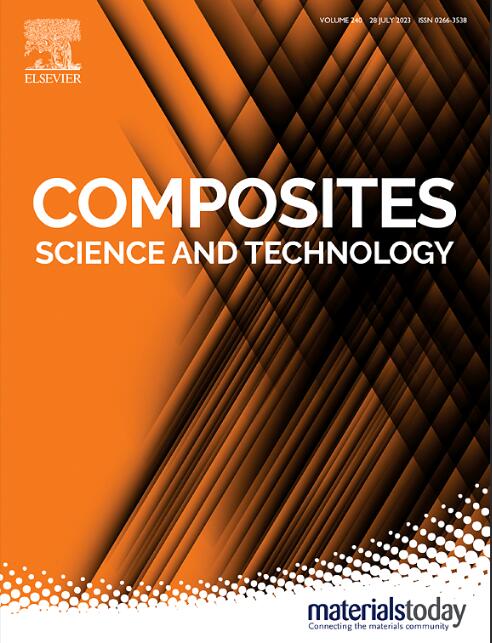Lattice-filler dual-gradient and hierarchical porous architectures customized by multiple-nozzle 3D printing towards excellent absorption-dominant electromagnetic interference shielding
IF 8.3
1区 材料科学
Q1 MATERIALS SCIENCE, COMPOSITES
引用次数: 0
Abstract
Exploiting high-performance absorption-dominant electromagnetic interference (EMI) shielding composites is ungently desired yet challenging for minimizing the secondary electromagnetic radiation pollution. Herein, lattice-filler dual-gradient Fe3O4/carbon nanotube/polyurethane&MXene (Fe3O4/CNT/PU&MXene; DGFCP&M) composite frames with a positive gradient of functional filler and a negative gradient of lattice size were successfully fabricated by a powerful multiple-nozzle immersion-precipitation 3D printing (ip3DP) technology. The insulative top layer of DGFCP&M frames with larger lattice pores plays a role as an impedance matching layer to mitigate the reflection of electromagnetic wave (EMW). Nevertheless, the highly conductive bottom layer of MXene with non-lattice structure acts as a reflective layer to reflect EMW back to the interior of DGFCP&M frames. Moreover, hierarchical porous structures (lattice macropores and filament micropores) can prolong the transmitting path to enhance the attention of EMW energy. In consequence, excellent SET of 72.7 dB and A of 0.62 are achieved for DGFCP&M-8 composite frame at EMW incident from top surface, both of which are superior to those of homogenous and single-gradient composite frames. Furthermore, visual simulations intuitively verify that the lattice-filler dual-gradient composite frame has an excellent absorption-dominant EMI shielding performance. The construction of lattice-filler dual-gradient architectures based on multiple-nozzle ip3DP provides a valuable insight into the fabrication and adjustment of absorption-dominant EMI shielding composites for the promising application in next-generation flexible and portable electronic devices.

求助全文
约1分钟内获得全文
求助全文
来源期刊

Composites Science and Technology
工程技术-材料科学:复合
CiteScore
16.20
自引率
9.90%
发文量
611
审稿时长
33 days
期刊介绍:
Composites Science and Technology publishes refereed original articles on the fundamental and applied science of engineering composites. The focus of this journal is on polymeric matrix composites with reinforcements/fillers ranging from nano- to macro-scale. CSTE encourages manuscripts reporting unique, innovative contributions to the physics, chemistry, materials science and applied mechanics aspects of advanced composites.
Besides traditional fiber reinforced composites, novel composites with significant potential for engineering applications are encouraged.
 求助内容:
求助内容: 应助结果提醒方式:
应助结果提醒方式:


